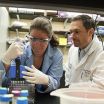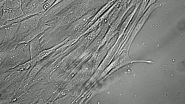(Press-News.org) ABBOTT PARK, Ill., Dec. 4, 2014 - Even in food-abundant industrialized countries like the U.S., an alarming number of people, particularly seniors, are in a state of diseased-associated malnutrition . Because of the impact on patient health, disease-associated malnutrition imposes a significant economic burden on society of $157 billion per year, according to new research published in a supplemental issue of the Journal of Parenteral and Enteral Nutrition (JPEN) and supported by Abbott .
Researchers looked at malnutrition across eight specific diseases* and evaluated the direct medical costs, the years of quality life lost** and mortality to determine the total economic burden. The cost was calculated using existing literature and estimates from the National Health Interview Survey (NHIS), the National Health and Nutrition Examination Survey (NHANES) and the Center for Disease Control and Prevention (CDC).
When looking across the eight diseases, researchers found that:
More than 80 percent of the total cost came from cases of depression, chronic obstructive pulmonary disease (COPD), coronary heart disease and dementia.
Patients with COPD, depression and dementia had the highest rates of malnutrition at 11 percent, 10.4 percent and 7.9 percent, respectively.
On a per patient basis, colorectal cancer, coronary heart disease and stroke patients experience the highest economic burden, despite these conditions accounting for a small proportion of the overall burden.
Disease-associated malnutrition affects about 10 percent of chronically ill patients in the public and between 30 and 50 percent of patients admitted to hospitals , . When malnutrition goes undiagnosed, particularly in seniors, it can lead to increases in health complications, hospital readmissions rates and overall health care costs .
While older patients represented only a small subset of the population studied (13 percent), the research found that nearly 33 percent of the total economic burden ($51.3 billion) from malnutrition came from people 65 and older.
more
"Particularly among older people, malnutrition can often go under the radar because the focus is on treating their primary condition," said Robert H. Miller, Ph.D., Divisional Vice President, R&D, Scientific and Medical Affairs, at Abbott Nutrition. "With new research showing the burden that malnutrition has on our community and our health care systems, doctors, hospitals and caregivers should factor in the importance of nutrition and nutritional screenings to help improve health outcomes for people at risk for malnutrition."
Importance of Screening for Malnutrition
Despite its prevalence, about 60 percent of patients are never screened for malnutrition risk, according to one study . Malnutrition can be treated if the patient is screened and offered nutritional support when they are at risk. Expert groups, such as the Alliance to Advance Patient Nutrition, are focused on encouraging more hospitals and health care providers to integrate nutrition screenings to assess patient risk in the hospital.
INFORMATION:
To learn more about what groups like the Alliance are doing to improve nutritional screenings in the hospital, visit http://www.malnutrition.com.
Additional information on the study, including authors and affiliation, can be found here: http://pen.sagepub.com.
About Abbott
Abbott is a global healthcare company devoted to improving life through the development of products and technologies that span the breadth of healthcare. With a portfolio of leading, science-based offerings in diagnostics, medical devices, nutritionals and branded generic pharmaceuticals, Abbott serves people in more than 150 countries and employs approximately 69,000 people.
Visit Abbott at http://www.abbott.com and connect with us on Twitter at @AbbottNews.
References:
1 Pereira G, et al. Annal. Emerg. Medicine. 2014.
Snider, J. et al., J Parenter and Ent Nutr. 2014; published online 23 September 2014. DOI: 10.1177/0148607114550000
2 Hirth RA, Chernew ME, Miller E, Fendrick AM, Weissert WG. Willingness to Pay for a
Quality-adjusted Life Year In Search of a Standard. Medical Decision Making.
2000;20(3):332-342.
3 Stratton RJ, et al. Disease-Related Malnutrition: An Evidence-Based Approach to Treatment. Cambridge, MA: CABI Publishing; 2003.
4 Robinson MK, et al. Improving nutritional screening of hospitalized patients: the role of prealbumin. JPEN J Parenter Enteral Nutr. 2003;27(6):389-395.
5 Somanchi M, et al. The facilitated early enteral and dietary management effectiveness trial in hospitalized patients with malnutrition. JPEN J Parenter Enteral Nutr. 2011;35 (2): 209-216.
6 Norman K et al. Clin Nutr. 2008; 27: 5-15.
Meijers JM, et al. Nutrition. 2009;25:5 12-519.
(Salt Lake City) --How can people who are dependent on prescription opioids reduce their cravings? Learn to enjoy other aspects of their lives.
That's the key finding in a new study published in the Journal of Behavioral Medicine by Eric L. Garland, associate professor at the University of Utah College of Social Work. Garland and colleagues studied how an intervention program for chronic pain patients called Mindfulness-Oriented Recovery Enhancement (MORE) decreased patients' desire for prescription drugs.
The MORE intervention concentrates on helping people ...
As California finally experiences the arrival of a rain-bearing Pineapple Express this week, two climate scientists from the University of Minnesota and Woods Hole Oceanographic Institution have shown that the drought of 2012-2014 has been the worst in 1,200 years.
Daniel Griffin, an assistant professor in the Department of Geography, Environment and Society at the University of Minnesota, and Kevin Anchukaitis, an assistant scientist at Woods Hole Oceanographic Institution, asked the question, "How unusual is the ongoing California drought?" Watching the severity of ...
Genetic mutations may cause more cases of amyotrophic lateral sclerosis (ALS) than scientists previously had realized, according to researchers at Washington University School of Medicine in St. Louis and Cedars-Sinai Medical Center in Los Angeles. The scientists also showed that the number of mutated genes influences the age when the fatal paralyzing disorder first appears.
ALS, also known as Lou Gehrig's disease, destroys the nerve cells that control muscles, leading to loss of mobility, difficulty breathing and swallowing, and eventually paralysis and death. Understanding ...
The Institute for Quality and Efficiency in Health Care (IQWiG) investigated in a dossier assessment whether propranolol offers an added benefit in comparison with the appropriate comparator therapy in infants with proliferating infantile haemangioma (sometimes called "strawberry mark").
According to the findings, there is an indication of major added benefit of propranolol in some children, i.e. those with haemangioma with a risk of permanent scars or disfigurement. In contrast, an added benefit is not proven for children with life- or function-threatening haemangioma, ...
The vicious cycle of diabetes describes a scenario where people are becoming fatter, often with elevated levels of glucose, and at increased risk for women to develop gestational diabetes (GDM). Intrauterine exposure to GDM, itself, is a major risk factor for later obesity and diabetes, thus perpetuating this maternal-offspring cycle of disease.
Researchers from Lund University have published an overview of evidence across the past few decades in the journal Diabetes, Metabolic Syndrome and Obesity: Targets and Therapy. They emphasize the need to update diabetes prevention ...
It means cancer "in place" but a carcinoma "in situ" often does not want to keep its place. Standing between a cancer cell in situ and the surrounding tissue of fibroblasts and extracellular matrix is the basement membrane, a thin sheet of fibers that normally cradles the cells above it. The basement membrane is also the frontline physical barrier that keeps primary tumors from spreading into the matrix below. Perforating the basement membrane is a cancer cell's first move toward invasion, but how? Fibroblasts are most commonly found in connective tissue that synthesizes ...
In the human brain, the BBB is not the Better Business Bureau but the blood brain barrier and the BBB is serious business in human physiology. The human BBB separates circulating blood from the central nervous system, thus protecting the brain from many infections and toxins. But the BBB also blocks the passage of many potentially useful drugs to the brain and it has long stymied scientists who want to learn more about this vital tissue because of the lack of realistic non-human lab models. Even less is known about the BBB in children. There are significant structural and ...
VIDEO:
This 19-second time lapse video shows the first six hours of neuronal conversion of skin fibroblasts from a patient with Alzheimer's disease.
Click here for more information.
The search for a living laboratory model of human neurons in the grip of Alzheimer's disease (AD)--the so-called "Alzheimer's in a dish"--has a new candidate. In work presented at the ASCB/IFCB meeting in Philadelphia, Håkan Toresson and colleagues at Lund University in Sweden report success ...
Location, location, location goes the old real estate proverb but cancer also responds to its neighborhood, particularly in the physical surroundings of bone marrow cells where human myeloid leukemias arise and where, according to two Harvard bioengineers, stiffness in the surrounding extracellular matrix (ECM) can predict how cancer subtypes react to chemotherapy. Correcting for the matrix effect could give oncologists a new tool for matching drugs to patients, the researchers say.
In work to be presented at the ASCB/IFCB meeting in Philadelphia, Jae-Won Shin and David ...
Alzheimer's disease (AD) progresses inside the brain in a rising storm of cellular chaos as deposits of the toxic protein, amyloid-beta (Aβ), overwhelm neurons. An apparent side effect of accumulating Aβ in neurons is the fragmentation of the Golgi apparatus, the part of the cell involved in packaging and sorting protein cargo including the precursor of Aβ. But is the destruction the Golgi a kind of collateral damage from the Aβ storm or is the loss of Golgi function itself part of the driving force behind Alzheimer's? This was the question for Yanzhuang ...



